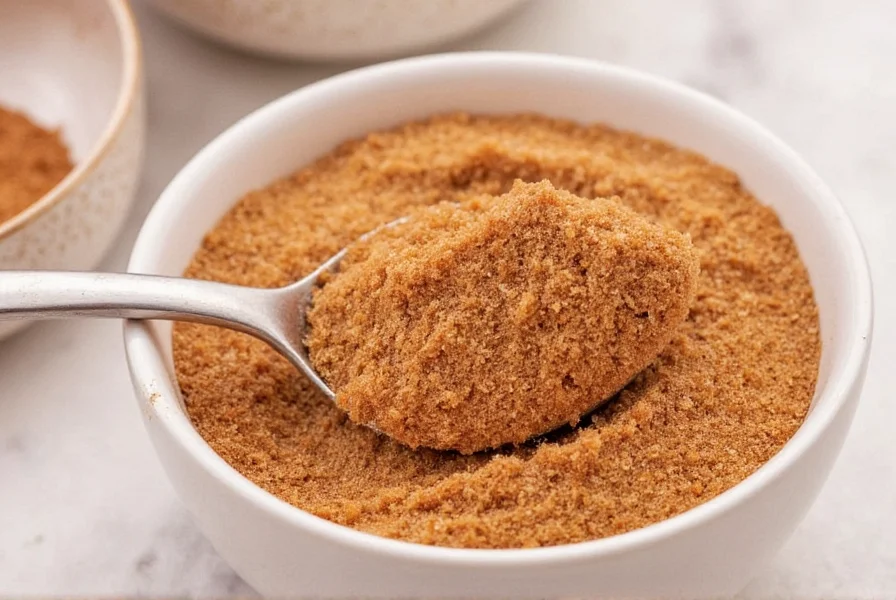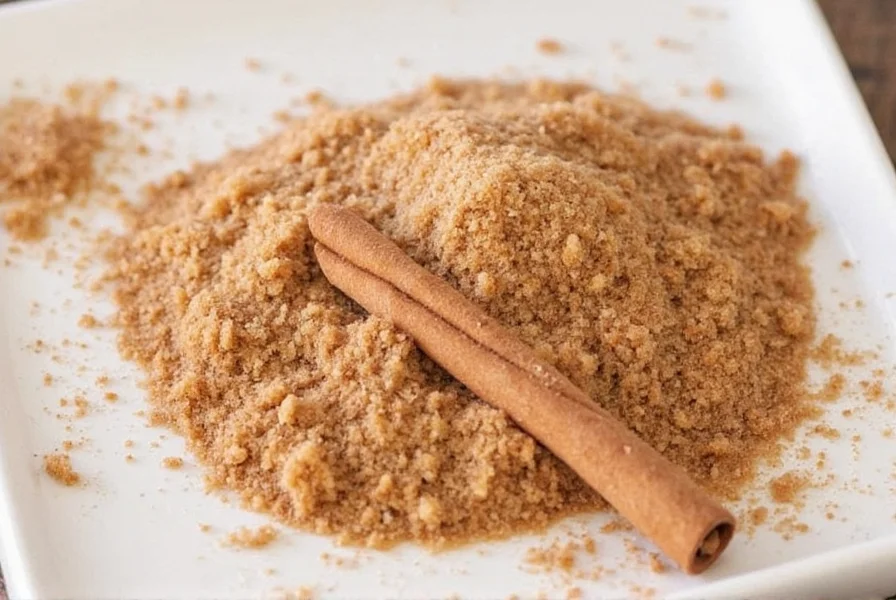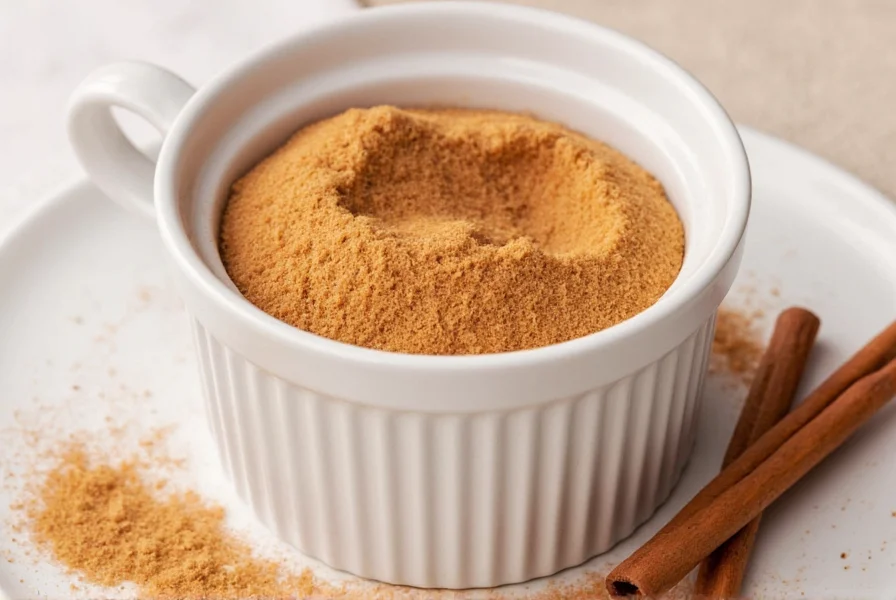The simplest way to make cinnamon sugar is by combining 1 tablespoon of ground cinnamon with 1/4 cup of granulated sugar. Mix thoroughly in a small bowl until evenly distributed. This basic 1:4 cinnamon-to-sugar ratio creates perfectly balanced homemade cinnamon sugar ready for immediate use.
Creating your own cinnamon sugar is one of the easiest kitchen staples you can master. Unlike store-bought versions that often contain anti-caking agents or inconsistent ratios, homemade cinnamon sugar gives you complete control over flavor intensity and quality. Whether you're dusting it over toast, mixing it into coffee, or using it as a baking ingredient, this two-ingredient wonder enhances both sweet and savory dishes with minimal effort.
What You'll Need to Make Cinnamon Sugar
The beauty of this recipe lies in its simplicity. You only need two ingredients and basic kitchen tools:
- Granulated white sugar (1/4 cup)
- Ground cinnamon (1 tablespoon)
- Small mixing bowl
- Whisk or fork
- Airtight container for storage

Step-by-Step Instructions for Perfect Cinnamon Sugar
- Measure 1/4 cup of granulated sugar into a small bowl
- Add 1 tablespoon of ground cinnamon
- Whisk thoroughly for 30-60 seconds until the mixture achieves a uniform color
- Check for any clumps and break them apart with your fingers
- Transfer to an airtight container for storage
The key to professional-quality homemade cinnamon sugar is thorough mixing. Incomplete blending results in uneven flavor distribution where some bites taste overwhelmingly of cinnamon while others lack flavor entirely. Take the extra moment to ensure complete integration for consistent results every time.
| Cinnamon Sugar Ratio | Best For | Flavor Profile |
|---|---|---|
| 1 tbsp cinnamon : 1/4 cup sugar | General purpose use | Balanced, versatile |
| 2 tbsp cinnamon : 1/4 cup sugar | Cinnamon rolls, snickerdoodles | Bold, pronounced cinnamon |
| 1.5 tsp cinnamon : 1/4 cup sugar | Delicate pastries, coffee | Subtle, background warmth |
Pro Tips for Exceptional Cinnamon Sugar
While the basic recipe works perfectly, these professional techniques elevate your homemade cinnamon sugar:
- Sift for perfection: For ultra-fine texture, especially important in baking, sift both ingredients together through a fine mesh strainer
- Freshness matters: Use cinnamon that's less than 6 months old for the most vibrant flavor—older cinnamon loses potency
- Moisture control: Add 1/4 teaspoon of cornstarch to prevent clumping in humid environments
- Customization: Experiment with different cinnamon varieties—Ceylon offers a delicate flavor while Cassia provides robust intensity
Versatile Uses Beyond Toast
While cinnamon sugar on toast is classic, this versatile blend enhances numerous dishes:
- As a finishing touch on freshly baked breads and muffins
- Mixed into coffee or hot chocolate for natural sweetness
- Rubbed on roasted sweet potatoes or carrots
- As a rimming sugar for specialty cocktails
- Added to pie crusts for apple or peach desserts
- Shaken with fried chicken for sweet-savory fusion

Storage Guidelines for Long-Lasting Freshness
Proper storage maintains your homemade cinnamon sugar's flavor and texture:
- Store in an airtight container away from heat and moisture
- Keep in a cool, dark pantry location (not near the stove)
- Properly stored, it maintains peak quality for 6-8 months
- Check periodically for clumping, which indicates moisture exposure
- Refresh stale cinnamon sugar by adding a few grains of uncooked rice to absorb moisture
Customizing Your Cinnamon Sugar Blend
Once you've mastered the basic recipe, try these creative variations:
- Vanilla-infused: Add 1/4 teaspoon vanilla extract to the sugar before mixing
- Nutty twist: Incorporate 1 tablespoon of finely ground toasted nuts
- Spiced version: Blend with small amounts of nutmeg, allspice, or cardamom
- Orange zest: Mix in 1 teaspoon of finely grated orange zest for citrus notes
- Dark sugar option: Substitute half the white sugar with light brown sugar for caramel notes
Frequently Asked Questions
What's the perfect cinnamon to sugar ratio for baking?
For most baking applications, a ratio of 1 tablespoon cinnamon to 1/4 cup sugar provides ideal flavor balance. For stronger cinnamon flavor in recipes like snickerdoodles or cinnamon rolls, increase to 2 tablespoons cinnamon per 1/4 cup sugar.
Can I use brown sugar instead of white sugar for cinnamon sugar?
Yes, you can substitute brown sugar, but it creates a different texture and flavor profile. Brown sugar adds moisture and caramel notes that may affect recipes. For best results, use half white sugar and half brown sugar when experimenting with this variation.
Why does my homemade cinnamon sugar clump together?
Clumping occurs due to moisture exposure. To prevent this, ensure your ingredients are completely dry, store in an airtight container, and consider adding 1/4 teaspoon cornstarch to absorb ambient moisture. If clumping occurs, break apart with a fork or pulse briefly in a spice grinder.
How long does homemade cinnamon sugar last?
When stored properly in an airtight container away from heat and moisture, homemade cinnamon sugar maintains optimal flavor for 6-8 months. The sugar itself doesn't expire, but the cinnamon flavor gradually diminishes over time.
Can I make cinnamon sugar without a whisk?
Absolutely. If you don't have a whisk, use a fork to mix the ingredients thoroughly, or place both ingredients in a small jar with a tight-fitting lid and shake vigorously for 30 seconds. The key is ensuring complete integration of both components.











 浙公网安备
33010002000092号
浙公网安备
33010002000092号 浙B2-20120091-4
浙B2-20120091-4